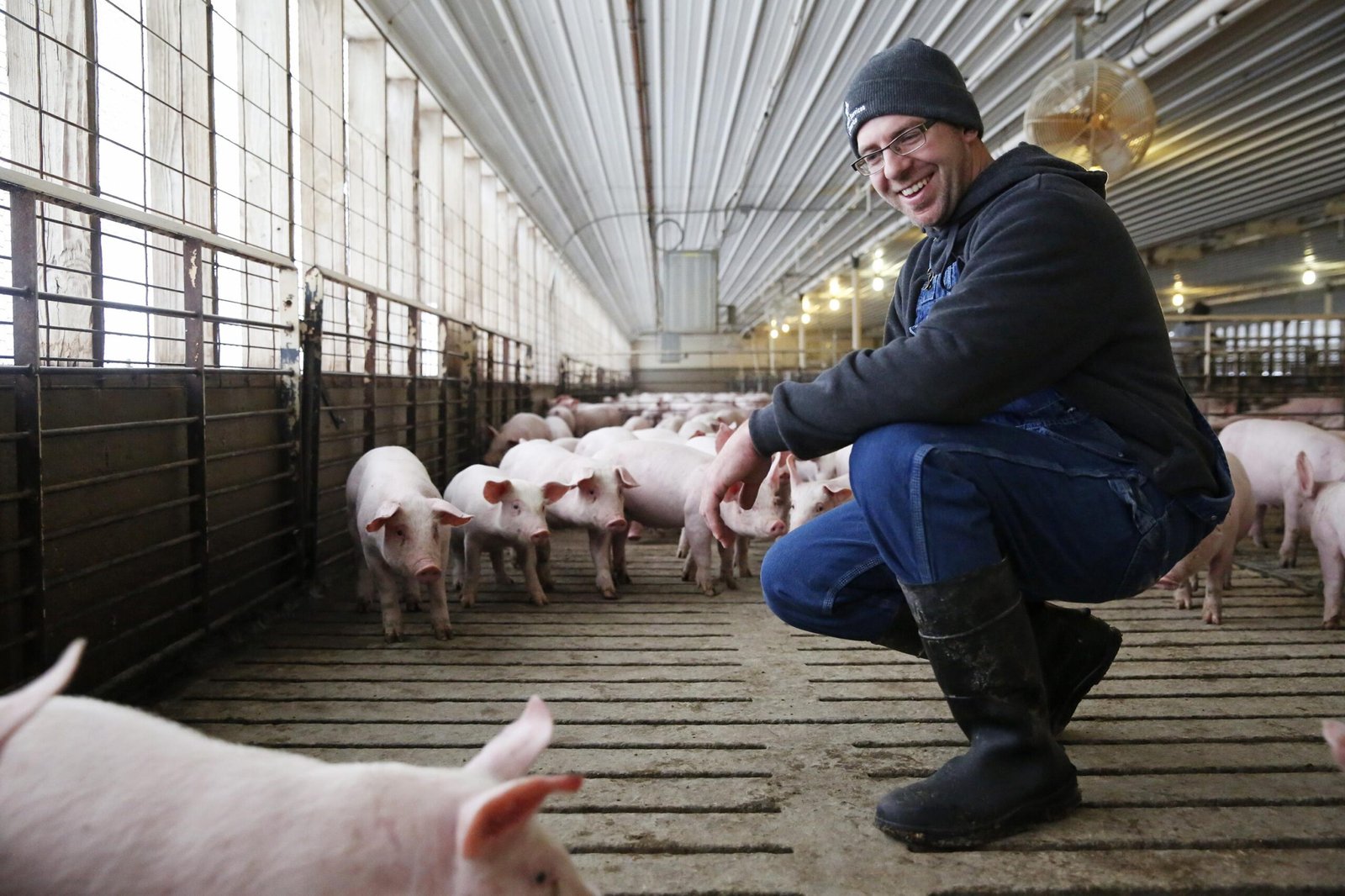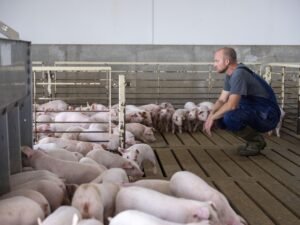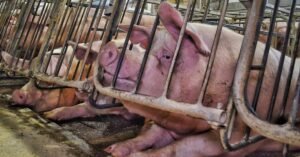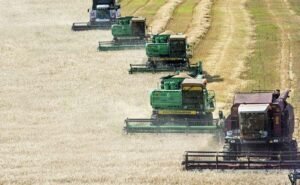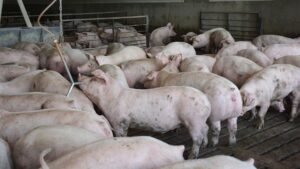Iowa pig producers stand as a formidable force, distinctly shaping the nation’s hog supply. When winter blankets the Midwest in silence, Iowa’s barns continue humming with life—triangulating a crucial aspect of America’s food industry. Recent figures attribute approximately one-third—33 to 35 percent—of all U.S. hog inventory to Iowa operations. With nearly 25 million pigs on farms by late 2023, Iowa has not just led but dominated this agricultural sector for years.
At fairs and hometown bars alike, discussion weaves itself around pork; it’s rooted deep within cultural identity here. Hog marketings have increased persistently for decades while the number of individual farms experiences a swift decline: from over 17,500 in 1997 down to about 5,253 by the end of 2022. Despite this reduction in numbers—and perhaps because of it—the average farm now manages around 4,532 pigs compared to hundreds per farm only some twenty-five years prior. Farming scale grows as smaller outfits yield field space and resources.
The shift is quietly seismic. Most strikingly, about seventy-three percent of Iowa’s hogs are concentrated on farms boasting more than five thousand head each—a statistic that would’ve seemed improbable back during “Y2K” hysteria. Merely five percent remain in hands raising fewer than two thousand animals at any given time, further exemplifying how economies of scale drive today’s pork production environment.
Money circulates like river currents through rural communities; $9.328 billion exchanged hands via cash receipts from swine sales across Iowa in just one recent calendar year (2023), representing more than a third (34%) of total national receipts tied to pig farming endeavors. The significance expands beyond countable dollars: nationally recognized as both granary and meat locker combined—for where else but here does corn so efficiently become loins and hams?
Yet industrial success brings peculiar paradoxes into focus. While market inventory climbed—a record high reached last December—the breeding herd saw reduction: roughly seven hundred fifty thousand heads remain after shedding nearly one-hundred-eighty-thousand animals during just twelve months’ span in 2023 alone. Oddly enough, although breeders decrease regionally there hasn’t really been any noticeable drop-off in local sows farrowing seasonally robust litters (a twist worth pondering). Some might argue cause-and-effect; however others interpret such metrics differently depending upon how they measure viability against technology’s march forward.
But what explains this preeminence? As often told among local producers at morning coffeeshops—or woven into community pancake suppers—Iowa boasts abundant feed grain harvests alongside exceptional logistical networks. This competitive advantage plays out vividly along highways lined with semi-trailers bearing live cargo toward packing plants both nearby and farther afield throughout the Heartland.
Economists describe these synergies using technical jargon—input cost efficiencies, vertical integration—but old-timers compare it more colorfully: “It all flows downstream,” they’ll say if you ask why more pork comes outta here than anywhere else.
However rosy the headline numbers might appear on balance sheets or handed over at annual extension conferences (the state claiming up to thirty-five percent share of national production), challenges float beneath placid surfaces too. Rapid disease transmission between densely located facilities can transform biosecurity protocols overnight; international trade shifts occasionally tip domestic pricing unpredictably; social conversations swirl regarding odor management or labor conditions—all crucial threads deserving greater scrutiny even amid industry triumphs.
Straying briefly before returning homeward—it is noteworthy that while most discussions fixate upon output statistics or wholesale valuations few acknowledge ancillary benefits such as allied equipment manufacturing growth statewide nor evolving research partnerships at land-grant universities investigating everything from precision nutrition regimens to methane mitigation systems.
Isn’t it curious how traditions entwine tightly with technological adoption though? One could say farmers are simultaneously rooted and restive—with pig genetics evolving almost as fast as smartphone apps these days—a contradiction only surface-level until considered through lived experience inside rural townships dotting an ever-changing agricultural landscape.
There will likely never be another time when smallholder producers reclaim preeminence against concentrated livestock operations unless global sentiment swings hard toward niche markets or regulatory frameworks compel redistribution:
an unlikely outcome given prevailing economic crosswinds but then again history’s logic sometimes dances counterclockwise unexpectedly.
To anyone reading windswept data tables about modern food provisioning—it would not quite suffice merely counting heads per census report without listening also for echoes rolling off concrete barn walls at dawn:
where each squeal marks emergence onto another day,
one inhabited by thousands steering an entire nation’s taste
from somewhere westward—
atop black glacial soils where heartland ingenuity keeps propelling whole industries sideways,
and occasionally upside down,
just beneath big Midwestern skies.
Iowa isn’t merely participating;
it is orchestrating America’s real-time answer
to a perennial question:
Who feeds whom when every barn door swings open?
And perhaps,
if you listen closely next time traveling Highway Thirty-four near Osceola or elsewhere unfamiliar yet well-known—
you’ll sense what makes up that quiet pulse behind one-third
of every ham sandwich found nationwide.

